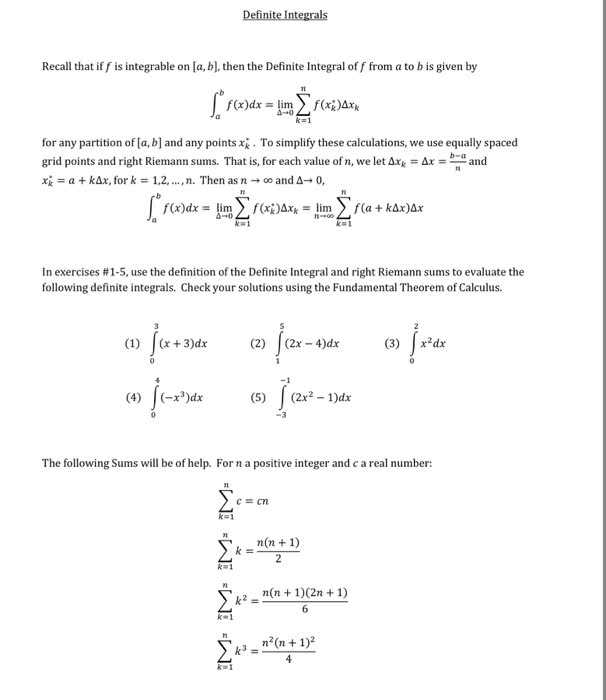MATH1051 Lecture 4: Lecture 04

5.3 – Fundamental Theorem of Calculus
Integral
●x dx
∫
b
a
32
○Solving for integral example
○x Δ = n
b−a= n
b
■Solve for xΔ
○0 kxk= + n
b= n
kb
■Solve for x
k
○(x) fk= n2
3b(k)
2 2
■Solve for f(x) k
○( )( )lim
n→∞ ∑
n
k=1 n2
3b k
2 2
n
b
●Compile the limit with the given information
○n3
3b3lim
n→∞ ∑
n
k=1
k2
●Move constants out to deal with only k2
○( )lim
n→∞ n2
3b3
6
n(n+1)(2n+1)
● is replaced by ∑
n
k=1
k2)( 6
n(n+1)(2n+1)
○( )lim
n→∞ 2n2
b(n+1)(2n+1)
3
■Simplify by cancelling out terms
○( )lim
n→∞ 2n2
b2n
32
■Simplify
○b3
Fundamental Theorem of Calculus #1
●If , (x) (t)dtf = ∫
x
a
g (x) g(x)f′=
●Ex
○(x) n(1 )dtF = ∫
x
a
l+t2
■ is the integral of on the interval (x)F n(1 )l+t2a,x][
Document Summary
Solving for integral example b a = n b x = n xk = + n k. Solve for f(x ) k n k=1 b n. Compile the limit with the given information k2. Move constants out to deal with only k2. Fundamental theorem of calculus #1 g(x) (x) f . + t2 on the interval a, x] (x)f is simply l n(1. The way to find integrals with difficult boundaries is to split them up. E2 e + 2 in(x) cos(x) dx. You could solve this directly or split the integral into two parts using ftd #2. This actually makes sense because the function (0))] (0)) 1 x2 is a parabola, equal on both sides of the y-axis. Because it is equal, then the area under the curve from [-1,0] is equal to [0,1], only negative. In this case, since the areas are equal and opposite in sign, they cancel each other out.



